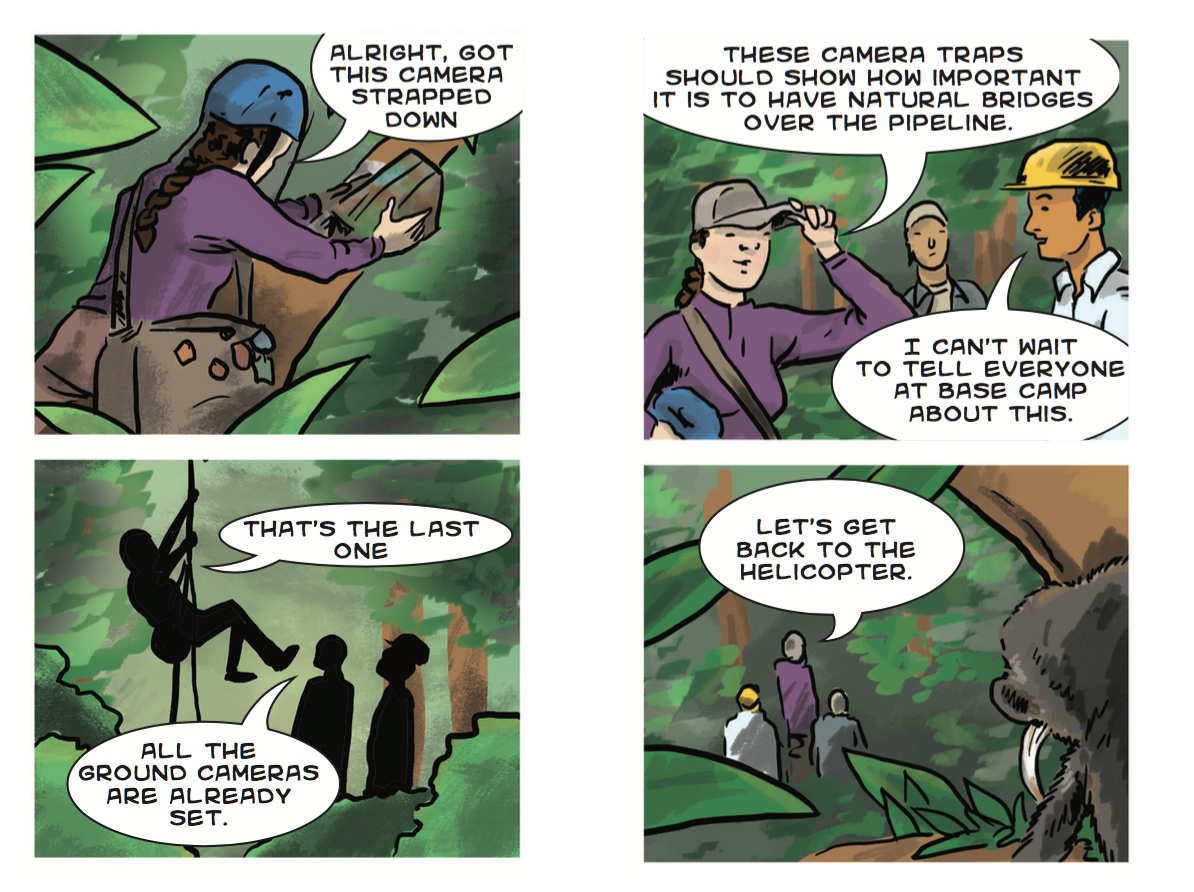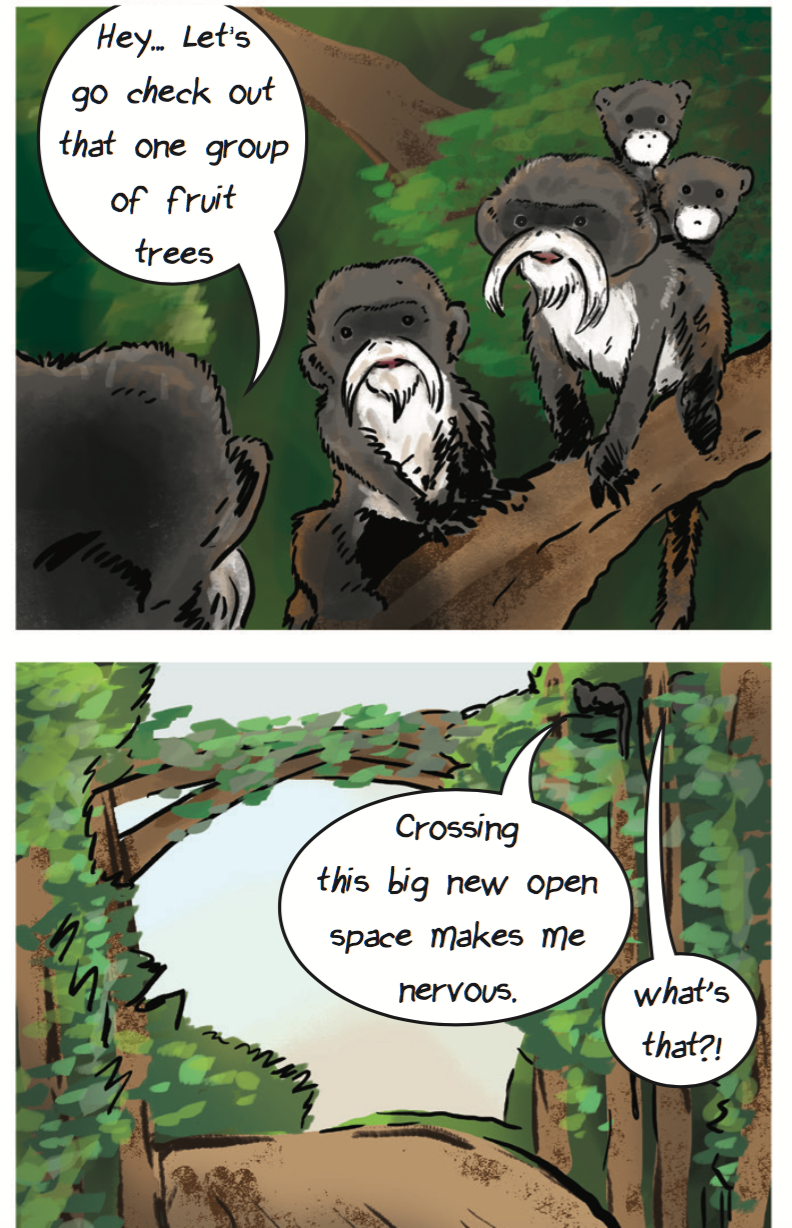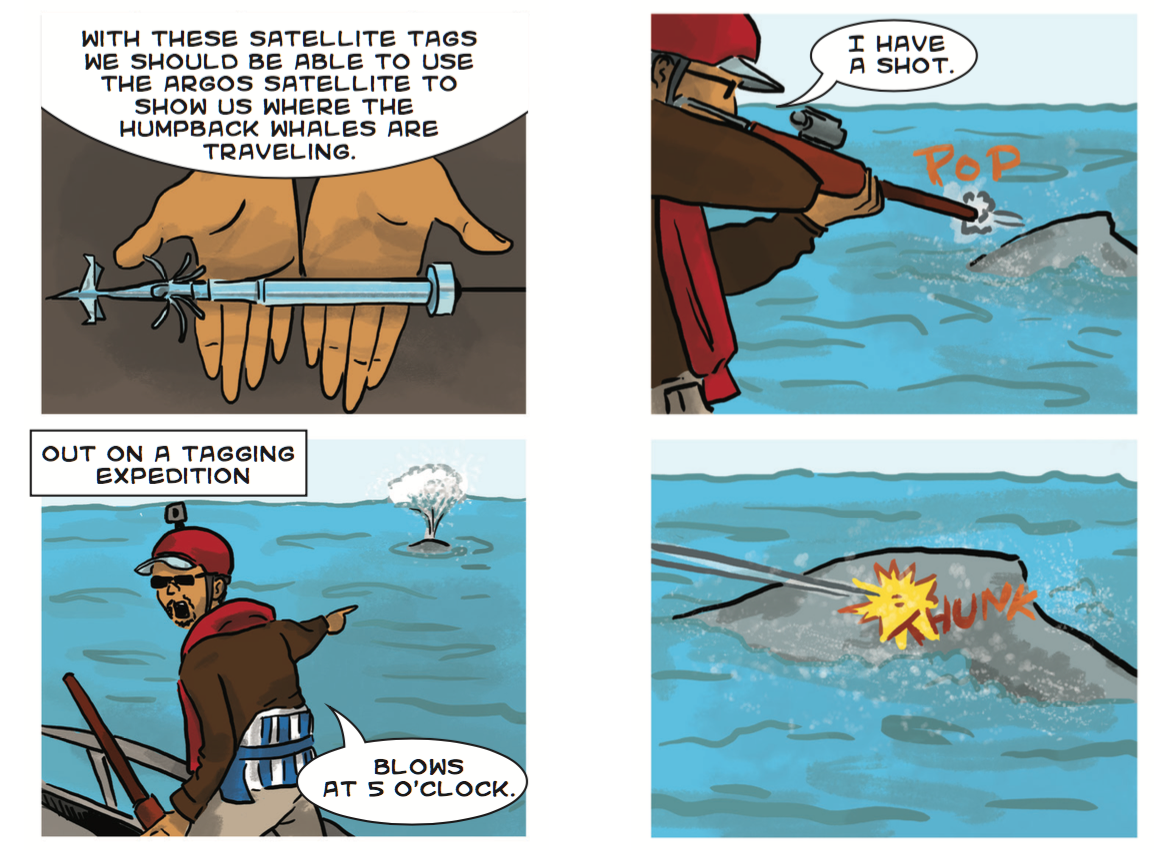- Comics are great for sharing conservation science with people of all ages in new ways.
- Kids and teachers can print these comics out and fold them into a mini comic book.
- The researchers and topics shown in these comics are real.
Comics have a way of rendering the seemingly mundane aspects of important events and pursuits, like conservation, as something verging on heroic. Or perhaps it just makes them more relatable and happening to real people (and creatures) in real time, but the idea of rescuing or otherwise helping animals certainly takes a page from the superhero tradition.
Evan Keeling makes such comics, and has been working at the Smithsonian Institution in Washington D.C. for 12 years doing exhibit production, and concurrently self-publishing comics. The current comic work he’s doing started in late 2015 when he worked with the American History Museum on a project about the Japanese American incarceration during World War II, and he has since done comics and programs with the National Portrait Gallery and the Asian Pacific American Center.
AN INTERVIEW WITH EVAN KEELING
Erik Hoffner for Mongabay: What spurred you to create these comics about conservation field work I saw at the Smithsonian’s recent Earth Optimism Summit?
Evan Keeling: Erin Chapman, one of the organizers of the Earth Optimism Summit, saw the (Japanese American incarceration) comics and was interested in seeing how something similar could be fit into the event. We met and talked over some different ideas and ultimately settled upon me doing three comics and the open workshop with other comic artists during the summit. The comic artists (including me) all went to panels at the summit and took notes to make comics live at the summit as well. I think they were largely looking for new ways to engage people with conservation issues.

Mongabay: Is graphic art like this better at explaining certain things or reaching a particular audience?
Evan Keeling: The great thing I have found with comics is that there are all sorts of different elements to draw people in. A large book on a complex or difficult subject will generally only be picked up by a person who is already interested in the subject. With a comic, you have people who are drawn to it by the art, who like comics, who want to check out something new as well as people who are interested in the subject. The small size of the comics that I create is also good for drawing people in, they are small and provide an easily digestible portion of a larger subject. That will pique interest as well as give you a nice dose of information quickly.
I don’t know if I should say it is better, because I am fairly biased. But I do think that comics make it very accessible.

Mongabay: Can you describe the process of creating these comics?
Evan Keeling: Smithsonian Conservation Commons selected three different conservation stories they wanted me to focus on. For my first step, I read articles provided me and contacted the principals for each of the projects. I did a few in-person interviews and was provided with a large array of materials about the different projects from articles to power point presentations to research papers. Using the interviews as a guide I distilled the information down to a short script for the 8-page comic.
Sometimes I ink and color the comics by hand but I have found that working digitally gives me the most freedom to adjust things when working on a quick turnaround. I use the scanned-in pencils to digitally ink and paint the pages. I use a lot of layers so that I can adjust different elements easily. When the coloring is done all the pages are assembled and sent back out for a final round of edits.
Mongabay: Who are these researchers that star in the “Treetop” and “Humpback” comics?

Evan Keeling: There were a number of people from different departments that I work on theses comics with but for ‘Treetop Bridges over a Pipeline,” Tremaine Gregory, a Conservation Biologist with the National Zoo Center for Conservation and Sustainability, (and for) “Humpback Highway,” Hector Guzman, a Research Biologist with the Smithsonian Tropical Research Institute.
Mongabay: Parents, kids and teachers are invited to print out and fold these to make a mini-comic book for the classroom or home? Are they available in Spanish too?
Yes! These are planned as a free resource that anyone can download and print. A big drive behind utilizing the format of an 8-page zine made out of a single piece of copy paper is the ease of distribution. Anyone can print them and with a little instruction can fold them without having to be concerned about page order or stapling the pages together. I want people to print them out as much as they like, share the link and share the comics. The Earth Optimism comics can all be found here, this includes a few different file types and all three of them are in Spanish.
All of the comics I have created so far for the Smithsonian can be found here.
And anyone can make their own, using the templates you created?
Anyone can do it with any size piece of paper once you work out the folding technique. My template is designed to make it a little quicker to get started especially during a workshop or class activity. The hope is that people will enjoy making the comics enough (that) they will branch out and make their own layouts.
